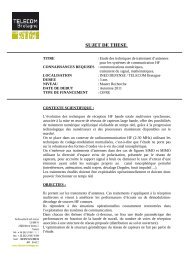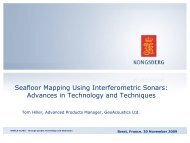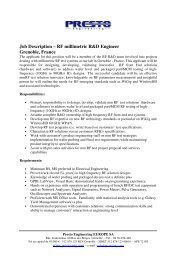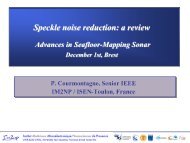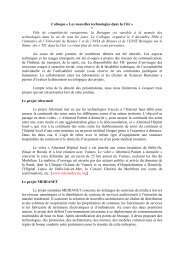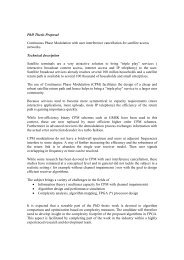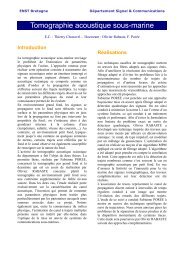Département Réseau, Sécurité et Multimédia Rapport d'Activités 2008
Département Réseau, Sécurité et Multimédia Rapport d'Activités 2008
Département Réseau, Sécurité et Multimédia Rapport d'Activités 2008
You also want an ePaper? Increase the reach of your titles
YUMPU automatically turns print PDFs into web optimized ePapers that Google loves.
Access ControlSecurity of Web ServicesResearch Staff : Frédéric Cuppens, Nora Cuppens-Boulahia – Ph.D. Student: Diala Abi HaidarKeywords : Access Control, XACML, Trust negotiationApplications : Web Service SecurityPartners & Funding : partially funded by France Telecom R&D, ANRT through a CIFRE grant, part ofresearch work within the RNRT project POLITESS.IntroductionWith the emergence of web services, sharingdata b<strong>et</strong>ween entities from different securitydomains raises the issue of protecting sensitiveresources. Access control and trustmanagement are research topics that offersolutions to such an issue. Access controlmodels offer a way of defining policies andrules for accessing protected data. In addition,many works have been done concerning thelanguages used to express the securityrequirements. These works have lead to anOASIS (Organization for the Advancement ofStructured Information Standards) standard,the eXtensible Access Control MarkupLanguage (XACML). Furthermore, trustmanagement is essential in a public worldinteraction. That is, entities need to negotiat<strong>et</strong>o establish a certain level of trust b<strong>et</strong>weenthem. A prototype for trust establishmentcalled TrustBuilder was proposed in theliterature [1]. It allows negotiating trust acrossorganizational boundaries due to iterativeexchanges of policies and certified attributes.Access control is important for private dataprotection and trust management isunavoidable if one needs to negotiate theaccess. This is why access control and trustmanagement should be done simultaneously inh<strong>et</strong>erogeneous worlds such as the webservices. We consider that the negotiation fortrust establishment is an usptream of accesscontrol management. We have been workingon this idea to find a flexible framework thatallows the expression of multiple accesscontrol models in web services.This research work is part of a thesisundertaken within a collaboration b<strong>et</strong>weenTELECOM Br<strong>et</strong>agne and France Telecom R&D.It is also supported by ANRT through CIFREunder a contract number 1026/2005. It is alsopart of research work within the RNRT projectPOLITESS.RealizationWe have defined XeNA [2, 3] (XACMLNegotiation of Access), a framework tointegrate the negotiation for trustestablishment within an access controlarchitecture based on XACML. XeNAincorporates our proposed negotiationarchitecture [4] based on two modules; (1) thenegotiation module that implements a resourceclassification based negotiation m<strong>et</strong>hodologyand (2) the exception treatment module that iscalled whenever exceptions are raised in thenegotiation process.According to our proposed resourceclassification based negotiation, resources areclassified at three different levels. Ressourcesclassified at level 1 are managed by directpolicies without negotiation. Ressources atlevel 2 are managed by public access controlpolicies that can be revealed. Within the class3 are resources managed by policies thatcannot be revealed. That is, we have definedtwo strategies for obfuscation that are used toobfuscate such resources' negotiation policies.Besides, we have formalized a derivationprocess that allows obtaining attribute-basedpolicies, i.e. negotiation policies, used withinthe negotiation process. This derivationprocess is a correlation b<strong>et</strong>ween the accesscontrol policies and the mapping policies.These mapping policies define the conditionsof mapping concr<strong>et</strong>e entities (subject, action,and object) into corresponding organizationalentities (role, activity, view and context).Furthermore, we have specified thenegotiation protocol that is used at the level ofthe negotiation module. This protocol canimplement four different strategies ofPracom’s Annual Report <strong>2008</strong> 49




